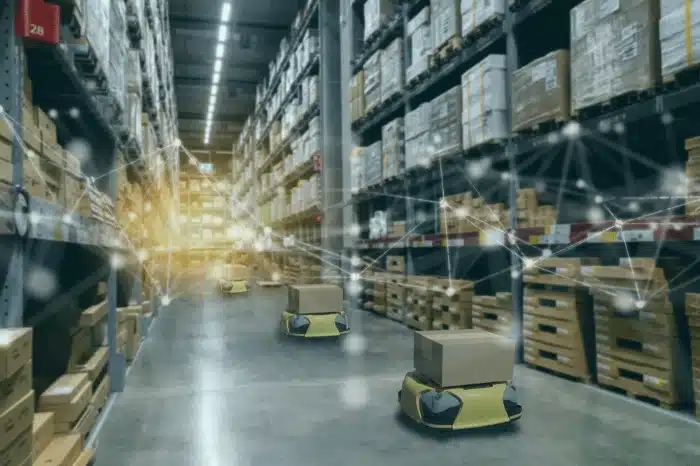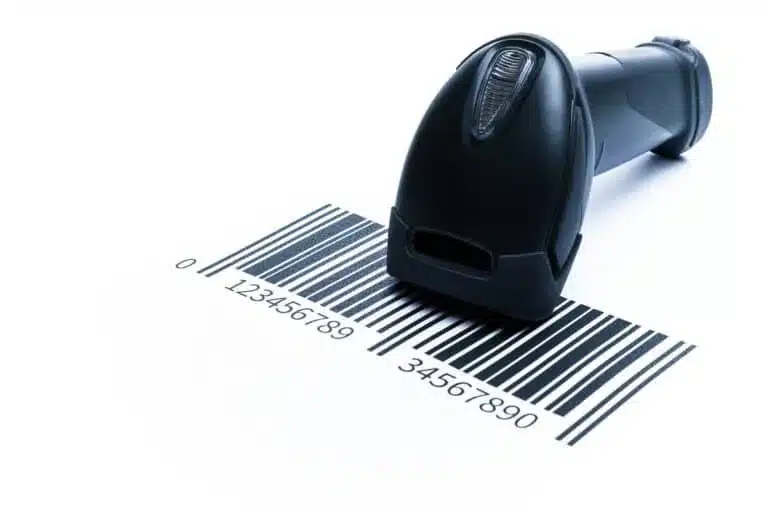
The 3PL warehouse management industry is rapidly evolving and experiencing substantial growth, with new technologies and trends emerging that will shape the mid to long-term future of the sector. In this article, we’ll explore some of the most significant long-term trends and technologies that are expected to transform the 3PL warehouse management landscape by 2030 and discuss how 3PL providers can prepare for these changes.
Artificial Intelligence and Machine Learning in Supply Chain Management
By 2030, artificial intelligence (AI) and machine learning (ML) will have become integral to 3PL warehouse management and supply chain management, enabling more intelligent decision-making and improved efficiency. AI and ML can be leveraged for tasks such as:
- Demand forecasting: Using historical data and real-time market trends in global markets to predict future demand with greater accuracy, helping to optimize inventory levels and reduce stockouts or overstocks.
- Inventory optimization: Analyzing patterns in inventory movement and identifying optimal stock levels to minimize carrying costs and maximize order fulfillment rates.
- Route planning: Optimizing transportation routes to minimize delivery times, fuel consumption, and transportation costs in logistics infrastructure.
By adopting AI and ML technologies, 3PL providers can reduce costs, enhance customer service, improve transportation management, and respond more quickly to market changes.
Advanced Robotics and Automation
As labor shortages and rising operational costs persist, advanced robotics and automation will become increasingly essential for 3PL warehouses. Robotics can perform tasks such as picking, packing, and palletizing, while automation can help streamline various warehouse processes. By 2030, we can expect to see:
- Collaborative robots working alongside human operators, improving efficiency and reducing the risk of injury.
- Self-driving vehicles, such as autonomous forklifts and Automated Guided Vehicles (AGVs), navigating warehouses and transporting goods with minimal human intervention.
- Robotic sortation and packing systems, enabling faster, more accurate order fulfillment and reducing the risk of errors or damaged goods.
Investing in these technologies will help 3PL providers address labor shortages, improve efficiency, and reduce human error.
The Internet of Things (IoT)
By 2030, IoT will have become a crucial component of the 3PL warehouse management industry. IoT devices, such as sensors, RFID tags, and smart shelves, can provide real-time data on inventory levels, warehouse conditions, and equipment status. This enhanced visibility will enable:
- Proactive maintenance of warehouse equipment, reducing downtime and repair costs.
- Improved energy management, as IoT sensors monitor and optimize energy consumption in real-time.
- Enhanced safety and security, as IoT devices track and monitor the movement of goods and personnel within the warehouse.
Blockchain Technology: Revolutionizing Global Supply Chains
Blockchain technology has the potential to revolutionize supply chain management by providing a secure, transparent, and tamper-proof record of transactions. By 2030, blockchain could be used in the 3PL warehouse management industry to improve supply chain management processes, such as:
- Enhance traceability and transparency in the supply chain, enabling end-to-end visibility and improved regulatory compliance.
- Improve data sharing among supply chain partners, facilitating better collaboration and streamlined processes.
- Reduce disputes and facilitate faster resolution of issues, as all parties have access to a single, verifiable source of truth.
Sustainable Practices and Green Warehousing
By 2030, sustainable practices and green warehousing will be a priority for the 3PL industry. To minimize their environmental footprint and meet the increasing demand for eco-friendly services, 3PL providers can:
- Adopt energy-efficient equipment and lighting, reducing energy consumption and associated costs.
- Utilize renewable energy sources, such as solar panels, to power warehouse operations.
- Implement waste reduction strategies, such as recycling programs and reusable packaging solutions.

Customized and Personalized Services for Modern Supply Chains
As customer expectations continue to rise, 3PL providers will need to offer more customized and personalized services to stay competitive by 2030. This may involve:
- Tailored packaging: Designing and producing packaging that meets the specific requirements of each client, enhancing product protection and reducing waste.
- Custom labeling: Providing unique labeling solutions that showcase a client’s brand identity and comply with regulatory requirements.
- Specialized storage solutions: Offering temperature-controlled, secure, or hazardous material storage to meet the unique needs of each client.
By offering these value-added services, 3PL providers can differentiate themselves and foster long-term customer relationships.
Integration of Emerging Technologies Across the Entire Supply Chain
By 2030, the 3PL warehouse management industry will have integrated various emerging technologies, such as:
- Augmented reality (AR): AR can help warehouse workers visualize picking routes and access real-time information about inventory levels, streamlining operations and reducing errors.
- Virtual reality (VR): VR can be used for employee training, allowing workers to practice and perfect their skills in a safe, virtual environment.
- Drone-based delivery systems: Drones can provide faster, more efficient last mile deliveries, especially in urban areas with high traffic congestion or difficult-to-reach locations.
These technologies can help improve efficiency, reduce errors, and enhance the overall customer experience.
Logimax WMS: A Future-Proof Solution for 3PL Warehouse Management
To stay ahead in the rapidly evolving 3PL warehouse management landscape, businesses need to invest in cutting-edge technology solutions like Logimax WMS. Our warehouse management software is specifically designed to help 3PL providers optimize their operations, streamline processes, and adapt to changing industry trends, both now and in the future.
At Logimax, we are committed to continually evolving and adapting to emerging technologies, ensuring that our software remains a future-proof solution for 3PL warehouse management. As new innovations such as AI, IoT, and advanced robotics become increasingly prevalent in the industry, Logimax WMS will seamlessly integrate these technologies into its platform, offering a comprehensive suite of features that help businesses stay competitive in the long term.
2030 3PL Predictions: Conclusion
The future of 3PL warehouse management will be shaped by a range of long-term trends and technologies, with a focus on improving efficiency, reducing costs, and meeting ever-evolving customer expectations. By staying informed about these future trends and investing in innovative technologies such as AI, advanced robotics, and IoT, 3PL providers can ensure they remain competitive and well-positioned for success in the years to come. Embracing sustainable practices and offering personalized services will also be crucial in meeting customer demands and differentiating in the market.
Ultimately, leveraging future-proof solutions like Logimax WMS can help businesses navigate these changes and adapt to the rapidly shifting landscape of 3PL warehouse management, allowing them to stay ahead of the competition and capitalize on emerging opportunities. With our commitment to incorporating current and future technologies, Logimax WMS provides a robust and adaptable platform designed to meet the evolving needs of the 3PL industry, both now and well into the future.
Get started with Logimax WMS today and empower your 3PL business to thrive in the future – contact us to learn more and schedule a demo.



